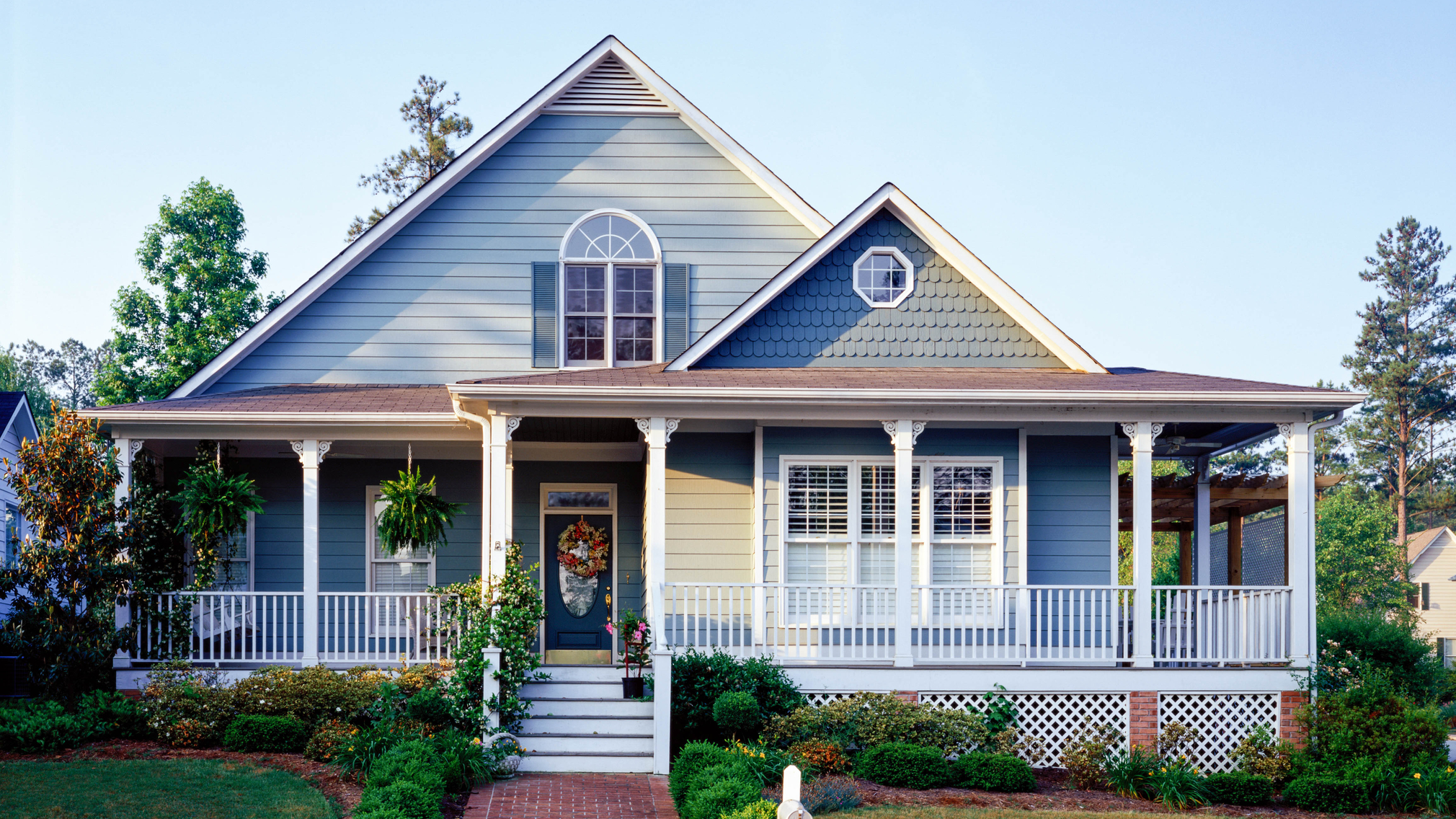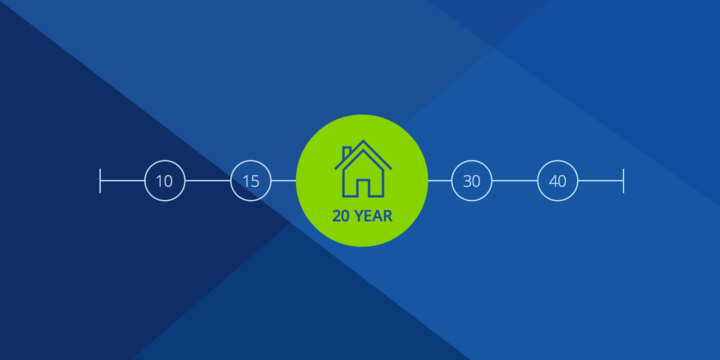6 Common Types of Home Loans
Finding a home loan that fits your needs and financial circumstances can take a bit of doing. Here’s a brief guide to help.


Written by Susan Kelleher on February 25, 2025
Just as homes come in different styles and price ranges, so do the ways you can finance them. Figuring out the best mortgage for your personal financial circumstances can feel like a choose-your-own-adventure at times. A great lender can walk you through all the different types of home loan options. But if you want to level up your understanding, this guide can help.
Let’s look briefly at the main types of mortgages:
- Conventional loans
- Jumbo loans
- Government-backed loans
- Special programs
- Fixed-rate mortgages
- Adjustable-rate mortgages
1. Conventional loans
Any loan that's not backed by the federal government is called a conventional loan. They’re widely available among lenders, and typically cost less than the most popular government-backed loan. But they’re also harder to get because they have stricter financial requirements to qualify for them. Unlike government-backed loans, conventional loans do not have a guarantee fee to support the program but they do require private mortgage insurance (PMI) if you put less than 20% down. The good news is PMI will automatically fall off the loan when your loan-to-value ratio reaches 78%.
Conventional loans come in two types: conforming and non-conforming. Both terms refer to limits on the amount you can borrow.
Conforming loans
Conforming loans have maximum limits that are set by the federal government. They also have to follow rules set by Fannie Mae or Freddie Mac, companies that guarantee most of the mortgages generated in the U.S.
The conforming loan limits change annually, and can vary depending on the location of the property. In 2025, the most you can borrow to buy a single family home in most of the U.S. is $806,500. Higher limits apply to communities where housing is more expensive. In 2025, the limit on loans for single family homes in those communities is $1,209,750. Conforming loans require at least a 3% down payment and a minimum FICO credit score of 620 to qualify.
Non-conforming loans
Non-conforming loans don’t have to adhere to the same standards as conforming loans, so the offerings from lenders can vary widely when it comes to what you need to qualify, as well as pricing and features. The variety makes it especially important that you shop around if you’re considering this type of home loan.
2. Jumbo loans
Loans that exceed conforming loan limits are called jumbo loans. They're a type of non-conforming conventional mortgage. Why would you want a jumbo loan? The easiest answer is because it allows you to buy a higher-priced home, if you can afford it. These loans have flexibility that conforming loans don’t have, such as not always requiring mortgage insurance.
Compared to conforming loans, interest rates on a jumbo loan will be higher. And they often require a 20% down payment and a minimum FICO credit score of 680-700, which can make them more difficult to qualify for.
3. Government-backed loans
Government-backed loans are insured by federal government agencies. The most common types are the Federal Housing Administration (FHA), the Department of Veterans Affairs (VA) and the United States Department of Agriculture (USDA). The three main types of mortgage loans include:
Federal Housing Administration (FHA) loans
FHA loans are mortgages insured by the Federal Housing Administration. These loans are designed for borrowers who can't come up with a large down payment or have less-than-perfect credit, which makes it a popular choice for first-time home buyers.
FHA loans allow for down payments as low as 3.5% and credit scores of 580 or higher. A credit score as low as 500 may be accepted with 10% down.
Because of the fees associated with FHA loans, you may be better off with a conventional loan, if you can qualify for it. The FHA requires an upfront mortgage insurance premium (MIP) as well as an annual mortgage insurance premium that you make monthly payments toward. If you put less than 10% down, the MIP must be paid until the loan is paid in full or until you refinance into a non-FHA loan.
Veterans Administration (VA) loans
VA loans are a zero-down mortgage option offered to qualifying veterans, active military and military families, as well as surviving spouses. The VA guarantees the loan for the lender, and the loan comes with benefits not seen with any other loan type. In most cases, you pay nothing down and you will never have to pay mortgage insurance. However, you’ll be required to pay a funding fee either at closing or tacked on to your loan amount. The fee varies depending on loan type, usage and down payment amount. You may be able to waive the fee if you get an exemption. If you qualify for a VA loan, this is almost always the best choice. You can learn more about qualifying guidelines for VA loans or look for VA lenders on Zillow.
USDA loans
USDA loans are backed by the United States Department of Agriculture (USDA) and are designed to help low- or moderate-income borrowers buy, repair or renovate a home in rural areas. Some suburban areas qualify, too. If you are eligible for a USDA loan, you can purchase a home with no down payment and get below-market mortgage rates.
4. Special programs
Low- and middle-income borrowers, first-time buyers and public servants such as nurses, teachers, firefighters and police officers may have access to special programs run through state or local housing agencies. The terms and conditions of those loans vary. For example, the federal Department of Housing and Urban Development runs the Good Neighbor Next Door Sales Program, providing loans and subsidies for homes in certain areas.
There are more than 2,000 programs nationwide, administered by local and state agencies, that offer loan assistance for low- and moderate-income buyers. Information on these programs can be found on HUD’s website.
5. Fixed-rate mortgages
When deciding on a loan type, one of the main factors to consider is the type of interest rate you’re comfortable with. Mortgages typically have either adjustable or fixed interest rates. . Fixed-rate mortgages get paid off over a set amount of time (10, 15, 20 or 30 years) at a specific interest rate that stays the same over the life of the loan. A 30-year fixed-rate mortgage is the most common.
With fixed-rate loans, you won’t have to worry about interest rates increasing. Your monthly payments may fluctuate a bit with property tax and insurance rates, but they’ll be fairly stable. If rates drop significantly, you have the option to refinance.
The shorter the loan term, the lower the interest rate will be. For example, a 15-year fixed will generally have a lower interest rate than a 30-year fixed. If you’re planning to stay in your home for a longer stretch — say 10 years or more, a fixed-rate could be a good choice.
View current 30-year fixed rate mortgages from Zillow Home Loans*.
6. Adjustable-rate mortgages (ARMs)
With an adjustable-rate mortgage, you’ll typically get a lower initial interest rate compared to a fixed-rate mortgage, but it won’t necessarily stay there. After the initial rate period, the interest rate will adjust on a preset schedule (usually annually or every six months), with rate caps that limit the size of the adjustment so you won’t see wild swings between adjustment periods.
A key benefit to adjustable-rate mortgages is lower rates to start. If you aren’t planning on staying in your home for long, or if you plan to refinance in the near term, an ARM is something you should consider. You also can qualify for a higher loan amount with an ARM (due to the lower initial interest rate).
The downside: Rates may increase after the adjustment period. If you don’t think you’ll save enough upfront to offset the future rate increase, or if you don't want to risk having to refinance into a potentially higher rate, think twice before taking out an ARM.
View current 7-year ARM rates from Zillow Home Loans*.
What should you look for in an ARM?
Look carefully at the frequency of adjustments. You’ll get a lower starting rate with more frequent adjustments but also more uncertainty. Check the payments you’d have to make if the interest rate reaches the upper limit of your cap and make sure you can afford them. Relying on a refinance to bail you out is a big risk.
Here are some common types of ARMs offered on 30 year terms:
- 3/1 ARM: Your interest rate is set for the first 3 years then adjusts annually for 27 years.
- 5/1 ARM: Your interest rate is set for the first 5 years then adjusts annually for 25 years.
- 7/1 ARM: Your interest rate is set for the first 7 years then adjusts annually for 23 years.
- 10/1 ARM: Your interest rate is set for the first 10 years then adjusts annually for 20 years.
What type of home loan should I get?
The type of home loan you should get depends on your financial situation and long-term goals. Fixed-rate loans offer stability with consistent monthly payments, while adjustable-rate mortgages (ARMs) usually start with lower rates, but can change over time. If you plan to stay in the home long-term, a fixed-rate loan may be better, but if you're planning to move in a few years, an ARM could save you money initially. Make sure to compare options and consult a lender to find the best fit for your needs.
Now that you have a general understanding of the loan types, it’s a good idea to talk to a local lender to hear about options tailor made for you. To learn more about mortgage-related terms, you can use our handy glossary.
*Zillow Home Loans; an equal housing lender. NMLS #10287
How much home can you afford?
At Zillow Home Loans, we can pre-qualify you in as little as 5 minutes, with no impact to your credit score.
Zillow Home Loans, NMLS # 10287. Equal Housing Lender
Get pre-qualifiedHow much home can you afford?
See what's in reach with low down payment options, no hidden fees and step-by-step guidance from us at
Zillow Home Loans.
Zillow Home Loans, NMLS # 10287. Equal Housing Lender
Calculate your BuyAbility℠



